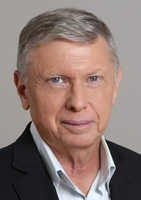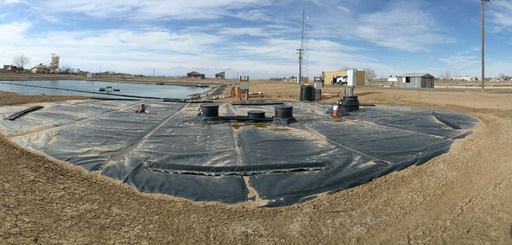It's Time For Action: Why We Can Go Beyond Words To Accelerate A Circular Economy

Despite circular economy and “one water” ambitions, progress remains slow and the uptake of circular solutions blocked by human nature’s aversion to risks, say Marc Perlman and Ofer Avidan. They argue why solid business models are needed to accelerate the circular economy revolution.
“There is no business leadership in the industry when it comes to the circular economy movement, and water treatment is conceived as a financial punishment when in more and more cases, new technologies can create a positive business plan.
“Our next step is to create a circular economy community that will look at disrupting supply chains, similarly to how the cryptocurrency community did for the financial institutions,” according to Perlman and Avidan.
The comments come at a time of an increasing focus on the Circular Economy across Europe. The European Commission's adoption of the circular economy action plan (CEAP) means achieving circular economies has become an aspirational central building block of the European Green Deal and the continent's drive for sustainable growth.
A Need For Circular Leadership
A “What If” position paper from the World Economic Forum (WEF) stated that a “circular water economy” can create cleaner, greener, healthier, and more prosperous cities. "It is necessary to see water as a catalyst and key to unlocking multiple wins spanning these pressing issues to achieve a more equitable and sustainable global economy," said WEF.
Five recommendations were provided:
- Support a leader group of cities committed to a percentage of circular water infrastructure by 2030
- Form a network of “100 Circular Cities” modelled after the 100 Resilient Cities or C40 Network
- Set up “blue” circular economic zones, with tax breaks and lower tariffs like free trade zones
- Escalate consumer education and awareness globally on water and circularity
- Fund circular city water outcomes.
Despite the ambitions, Avidan says current progress on the circular economy remains mainly rhetorical rather than actionable.
“Unfortunately, the “circular economy” as an aspiration is like a ghost,” he says. “There is no structure, no union or group that’s organizing the tools needed to turn this concept into something meaningful for a better world.
“We assume that there are companies and potential partners that have invested in circular economy technologies and face the same marketing and sales problems as we do with ours. We can envision that these companies will be willing to cooperate and to demonstrate value and new economic models.”
Avidan believes that an entry requirement for such a community would involve an agreement to test “technology synergy that creates an economic value to communities and industry and, in the case of water, improves public health”.
Defining Innovation And Learning From Electric Vehicles

“Innovations have to demonstrate a meaningful improvement with better effect to the ecology but nonetheless economical; otherwise, it will stay as the domain of scientist and philanthropical communities rather than in the hands of the business community that will bring it to our lives,” he says.
“I would say that 9 out of 10 innovations are confused with improvements. However, the word 'innovation' itself is not important. What’s important is that there is a solution to the water problems around the world, and we can solve or improve yesterday's critical barriers with today's solutions in an economical way.”
The CEO believes the water sector can learn from the electric vehicle industry.
“Most of us will call the electric car an innovation — yet is it?” he asks. “There’s an innovation in the engine and the energy source that hopefully make it safer to the environment and more economical. This is the significant outcome here as transportation is an important part of our lives.”
He adds: “Similarly, the water and energy industry, as a necessity of life, needs to go through a change by creating an economic interest to investors and the financial sector in addition to the ecological one. Customers and the community can drive this forward.”
Solving Public Health
“Everybody will agree that if we can produce water without pollution, we are doing something meaningful, right? Reducing pollution enables healthier water, which brought us to the realization that once we deal with pollutants, we are dealing with public health. If water is safer and better, there will be less economic pressure on medical services, which are already exhausted in some areas,” he adds.
Marc Perlman and Ofer Avidan brought together the WFI Group in 2009 to solve water pollution problems and, in the process, improve public health. They believed that good science would evolve into solid technological solutions, eventually developing into companies.
Centred around water with positive economic models, the focus is on high-recovery reverse osmosis desalination, biological wastewater treatment and reuse, and inorganic pollutants water treatment. Business units include ROTEC, TOXORB, and TRIPLET.
“We understood that as a principle if we could solve water pollution problems related to public health, we will be relevant in markets in our own country and globally,” adds Avidan.
“The challenge is to do it economically to support a positive business model, and not as an expense or a liability, to be adopted by the industry and the financial sector.”
Water Purification And Reuse As Part Of A Circular Future
Multiple definitions exist on water’s role in the circular economy. For example, the Ellen MacCarthur Foundation states: “An opportunity to better align the human water cycle with the natural water cycle through rethinking products and services and eliminating ineffective actions.”
Meanwhile, the University of Bath, Water Innovation and Research Centre (WIRC) states: “Water is a key factor in the circular economy as it is used in many production processes. Furthermore, the water cycle can provide important resources, comprising water, nutrients, metals, grits and sands, and feedstocks for biofuels or bioplastics.”
Water reuse offers the potential to help provide additional water sources in the water cycle. And there remains an opportunity to roll decentralized reuse out to rural communities.
“There is a need to take wastewater and treat it in a way that adds value,” says Avidan. "We have made serious progress in this area by solving the technology gap with our TAYA technology, which has demonstrated a new ecological and economical way of biological wastewater treatment.”
He added: “Nitrate recovery as a high-quality fertilizer and ammonia recovery as biogas are additional breakthroughs — doubling the resources potential. We believe in delivering clear water value via zero pollutants, zero brine, and ultimately zero operational cost.”
Bennett Community Look To Smart Reuse
Meanwhile, in the U.S., water reuse has finally been given support and recognition at the highest level. The U.S. House of Representatives passed bipartisan infrastructure legislation to help drive investment into water reuse to provide resilience against the impacts of climate change, including drought and flooding.
As part of the $715 billion INVEST in America Act, the legislation includes commitments to invest in new water reuse projects and reactivating older schemes. Engineering, design, construction, and project testing will be applicable to apply for the funding.

Bennett, Colorado site
Furthermore, the U.S. Environmental Protection Agency's new federal Water Reuse Interagency Working Group will help develop and coordinate actions, tools, and resources to advance water reuse across the country.
One example of a U.S. town developer seeing the benefit of reuse is in the town of Bennett, Colorado. Residing on a high desert plain with little access to natural water resources, Bennett needed to provide affordable water for self-irrigation, increasing water autonomy while expanding eastward, creating new sustainable communities. Seeking a simple and cost-effective solution for wastewater reuse, they turned to the Israeli technology for wastewater reuse, TAYA.
Raw wastewater from the main sewer line entering the Bennett wastewater treatment plant (WWTP) is pumped into the system. Automated control features allow it to operate without a dedicated labourer.
High-quality treated effluent flows from the TAYA into the effluent tank and is pumped back to the WWTP. Adjustments such as covering and isolating the facility were made to enable full operation even in extreme cold weather conditions, enabling compliance with the effluent requirements of the local authority.
"This enables people in remote or secluded areas to treat and reuse the water. Doing this produces a new water source in these areas, turning wastewater treatment from a liability to a valuable asset."
Following the pilot's success, the TAYA technology was approved by the Colorado Department of Public Health and Environment as an alternative treatment technology in Colorado, paving the way for full-scale community development based on the TAYA ECO GO reuse facility.
Creating Value, Together
Avidan believes another challenge slowing the adoption of “circular solutions” is a reluctance to try new solutions, making it difficult for people to think about potential successes rather than risks.
"This has to do with human nature," he says. "Most of us are planning for the worst case when we are starting a business or new venture. We try to turn this around and ask, what will happen if we are successful?”
Time is of the essence. The recent International Panel on Climate Change (IPCC) report says we need to act swiftly and slash emissions by nearly half by 2030 to avoid the catastrophic impacts of a changing climate. And the water sector plays a role in helping to bridge the water-energy nexus. The CEO says one way to create urgency is to empower people through leadership.
“There is a real gap for technology companies and individuals between creating something that is in their field of interest and expertise and the difficulties to market and sell it. We encourage individuals or companies that feel the same to contact us and start a dialogue,” concludes the CEO.
Ofer Avidan is the cofounder and CEO, and Marc Perlman is the cofounder of the WFI Group.
